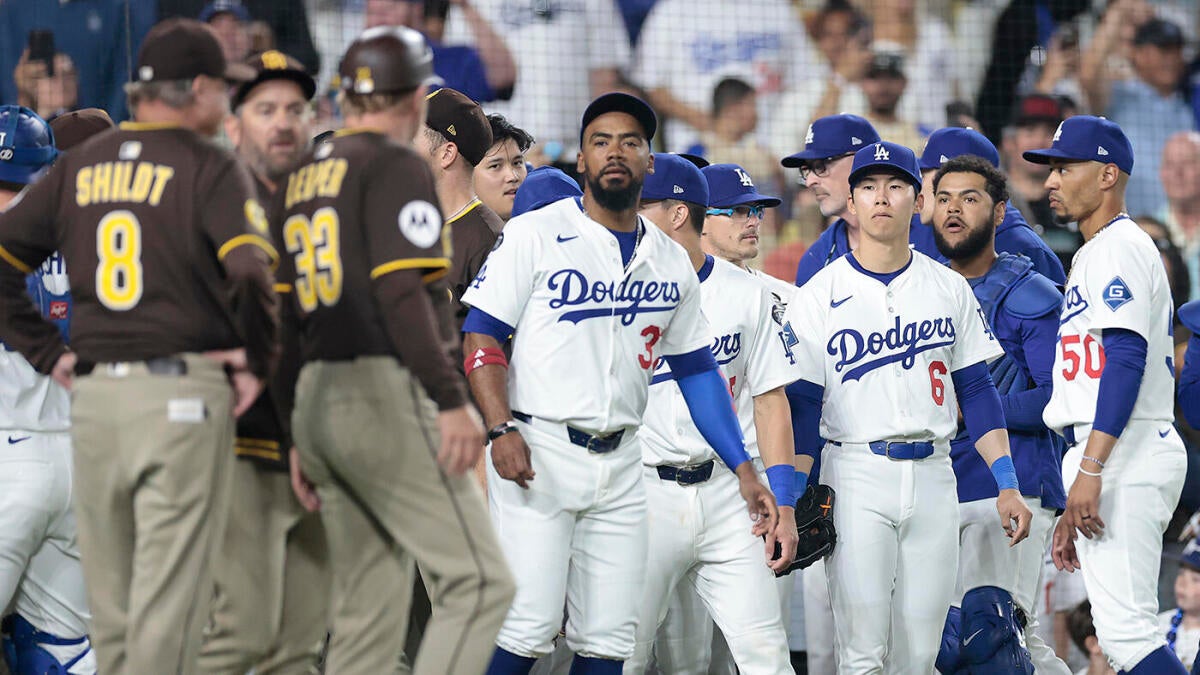A Rising Tide of Tension: The Dodgers-Padres Escalating Rivalry
In the heart of the National League West, a storm is brewing. The Los Angeles Dodgers and the San Diego Padres have transformed what was once a competitive series into a heated rivalry, marked by a series of hit-by-pitches (HBPs), ejections, and near-brawls. This isn’t just about the love of the game; it’s about a deliberate, retaliatory pattern of play that threatens to redefine this divisional matchup for years to come.
The Anatomy of a Feud: A Pattern of HBPs
The most glaring aspect of this escalating rivalry is the high number of batters struck by pitches. In just seven games spread over eleven days, ten players were hit, with some players, like Shohei Ohtani and Fernando Tatis Jr., being targeted multiple times. This isn’t a coincidence; the frequency and timing of these incidents strongly suggest intentionality.
The spark that ignited this powder keg appears to have been a series of HBPs directed at Tatis Jr. by Dodgers pitchers. The Padres, not to be outdone, responded in kind, with Ohtani being hit by a pitch from Randy Vásquez. This tit-for-tat dynamic is a classic hallmark of escalating rivalries, where each action is perceived as a provocation demanding a response. The fact that Ohtani was hit immediately after Tatis being hit further emphasizes this pattern of retaliation.
Managerial Involvement and the Boiling Point
The tension on the field quickly spilled over to the dugouts, with both managers, Dave Roberts of the Dodgers and Mike Shildt of the Padres, getting ejected during the heated series. Roberts was ejected after Ohtani was hit, demonstrating his frustration and perceived injustice. Shildt, meanwhile, was ejected alongside Roberts during a benches-clearing incident triggered by another HBP—this time, Tatis Jr. being hit by Dodgers rookie Jack Little.
The managers’ involvement highlights the high stakes and emotional investment in this rivalry. The fact that both Roberts and Shildt were ejected suggests a breakdown in communication and a mutual sense of grievance. This isn’t just about the players; it’s about the coaches and managers, too, who are equally invested in the outcome and the message being sent.
Ohtani as Peacemaker: A Moment of Contrast
Amidst the chaos, a moment of sportsmanship emerged, courtesy of Shohei Ohtani. After being hit by a pitch, Ohtani actively worked to de-escalate the situation, seemingly discouraging a full-scale brawl. This act of professionalism presents a stark contrast to the overall aggression displayed during the series. Ohtani’s behavior suggests a desire to maintain a level of decorum and prevent the situation from spiraling out of control.
However, Ohtani’s attempt at peacemaking doesn’t diminish the underlying tension or the deliberate nature of the HBPs. Instead, it adds another layer to the complexity of the rivalry, showing that even amidst the chaos, there are moments of clarity and restraint.
Implications for the NL West Race
Beyond the immediate drama, this feud has significant implications for the NL West standings. Despite the contentious series, the Dodgers maintain a comfortable lead in the division. However, the Padres’ aggressive approach and willingness to engage in a physical battle suggest they are prepared to challenge the Dodgers’ dominance.
The psychological impact of this rivalry could also be significant. The Padres, by demonstrating their willingness to retaliate and stand up to the Dodgers, may have sent a message to the rest of the league—and to the Dodgers themselves—that they are not to be underestimated. This increased intensity could elevate the level of play on both sides, leading to more competitive games and a more compelling divisional race.
A Rivalry Forged in Fire
The Dodgers-Padres series has rapidly evolved into a captivating, and potentially volatile, rivalry. The high number of HBPs, managerial ejections, and near-brawls demonstrate a level of animosity rarely seen in modern baseball. While Ohtani’s attempt at peacemaking offered a brief respite, the underlying tension remains palpable.
This isn’t simply about winning or losing; it’s about sending a message, establishing dominance, and asserting respect. As the season progresses, this rivalry is poised to become a defining narrative of the NL West, promising more drama, intensity, and potentially, more HBPs. The question isn’t *if* this feud will continue, but *how* it will unfold and what impact it will have on the ultimate outcome of the division race.
A Call to Arms
As we look ahead, one thing is clear: the Dodgers-Padres rivalry is here to stay. It’s a rivalry forged in fire, fueled by frustration and animosity, and driven by a desire to assert dominance. For fans of both teams, this means more than just exciting games; it means a battle for respect, a battle for supremacy, and a battle for the very soul of the NL West. So, buckle up, baseball fans. This is just the beginning. The best, and perhaps the most dramatic, is yet to come.











